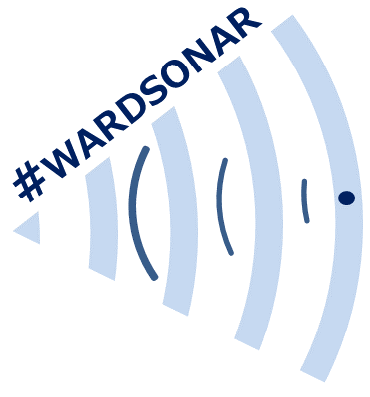Study update May 2022
We are now in the final stages of data collection. The six mental health wards involved in our study have been fantastically supportive, enabling us to observe ward life and interview service users and staff while the WardSonar intervention is being implemented. We will be able to look at the real-time data about the mood of the wards, which is collected via WardSonar devices, and compare it with what service users and staff are telling us, as well as routinely collected incident data from the wards.

We are very grateful to all the people who have been involved.
Throughout WardSonar, we have been preparing papers and study reports. The literature review we undertook at the beginning of the project has now been published in ‘Research Involvement and Engagement’ journal:
Brierley-Jones, L., Ramsey, L., Canvin, K. et al. To what extent are patients involved in researching safety in acute mental healthcare? Res Involv Engagem 8, 8 (2022). https://doi.org/10.1186/s40900-022-00337-x
Summary of the study.
Evidence shows there are large numbers of safety issues on acute mental health wards, frequently involving violence and self harm, associated with increased costs, physical and psychological harm. Safety data is currently only collected retrospectively and very little is collected from the service user perspective. This project aims to co-design with service users and staff a technological intervention that collects data about the perception of safety from service users, in order to support staff to anticipate and avoid developing incidents.
The project has three phases and uses different methods during each phase. Phase 1 uses a codesign approach to developing the intervention, supported by an ‘environmental scan’ consisting of a scoping review(Phase 1C) and the collection and qualitative analysis of interview data (Phase 1A&1B). Phase 2 will test and refine the intervention, examine available NHS data, and conduct further qualitative interviews. Phase 3 will be a mixed-methods process evaluation. We will collect routine data including incidents, NHS mental health safety thermometer, workforce and ward occupancy. Measures of safety culture, ward atmosphere and health related quality of life will be completed at six time points pre and post intervention. A focused ethnography pre and post intervention will explore how staff communicate and use safety data supported by interviews with service users and staff to further understand feasibility and acceptability. The synthesis of these data will assess the impact of the intervention on outcome measures; enhanced understanding of feasibility and acceptability and result in a draft pilot trial protocol.
Stakeholder and lay input has informed the development of this project, specifically through discussions with service users and co-applicant representation. A Lived Experience Advisory Group of service users will support the project. The key outputs of the research will be a new intervention in the form of a licensed product to enable the collection of and response to real-time service user generated safety data and improved economic understanding of acute mental health wards. The research will produce traditional and non-traditional publications in a variety of media. Dissemination will target key stakeholders: mental health service providers, commissioners, regulators, practitioners, policy makers, and academic researchers and make effective use of social media. We will publish in high-impact open access academic journals and present and discuss our findings at conferences to a wide range of practitioners, academics, service users. We will also devise and host a digitally supported dissemination event and invite representation from all stakeholders. The resulting product has the potential to improve safety and well being for service users and staff on acute mental health wards, a key concern of the Care Quality Commission and an NHS priority.
